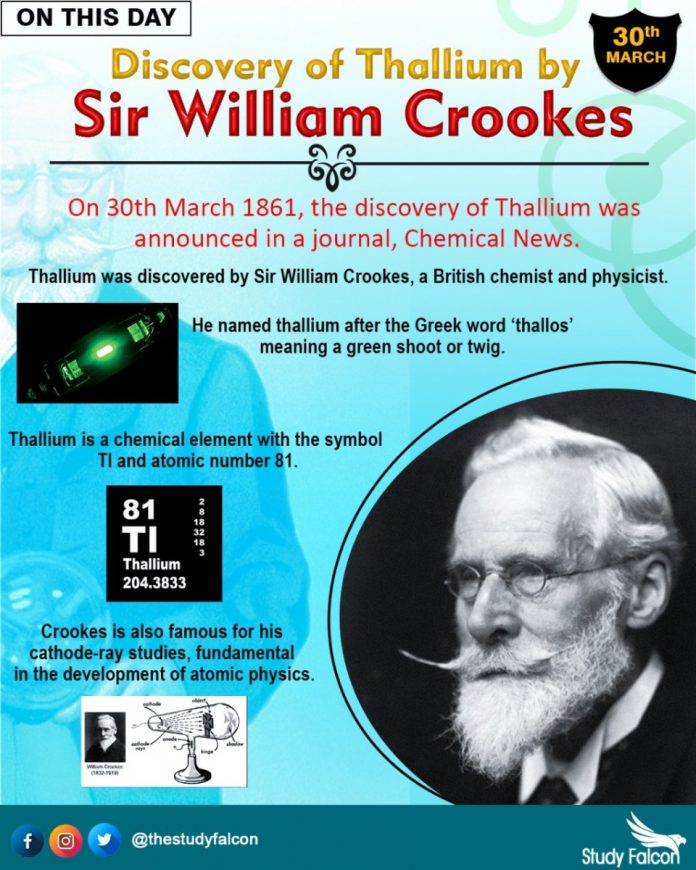- Sir William Crookes was a British chemist and physicist noted for his discovery of the element thallium and his cathode-ray studies, fundamental in the development of atomic physics.
- In 1850 Crookes had been given a deposit containing selenium from a sulfuric acid factory in Tilkerode. He extracted the selenium and was left with residues that appeared to contain tellurium.
- Eleven years later, Crookes needed some tellurium. He remembered that he had once found what seemed to be tellurium in residues from sulfuric acid factory deposits, so he tried to do this again.
- This time, however, he was unable to isolate any tellurium. Curious about why this should be, he decided to analyze the residues spectroscopically. He noticed a bright green line in the spectrum which he could not match with any known element.
- After many experiments, Crookes decided that the line was caused by a new element. He announced his discovery on 30thMarch 1861 in Chemical News, a journal which he published and edited.
- Crookes found it difficult to thoroughly investigate thallium because he had such small amounts of it. Despite this, he made thallium salts and, he claimed, some grains of powdered metallic thallium to display at the London International Exhibition in 1862.
- Crookes named thallium after the Greek word ‘thallos’ meaning a green shoot or twig, in reference to the unique green spectral line which identifies the element.










